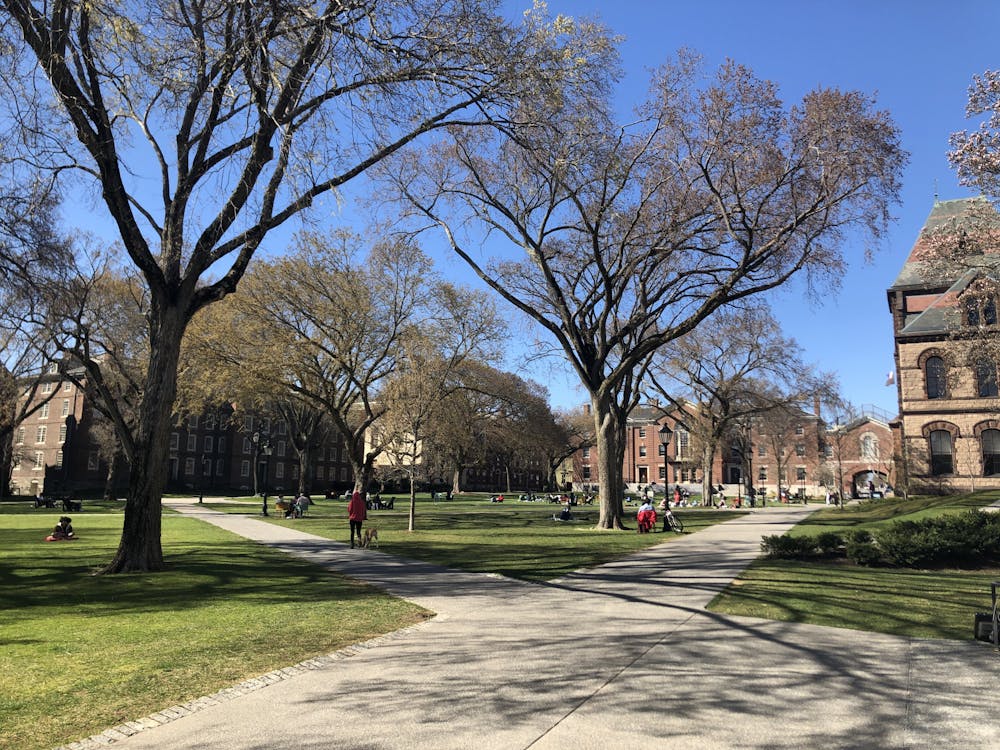When Pietro Pignatti Morano Campori ’26 arrived on campus this fall, he had only decided on two courses to take during his first semester. He knew for certain that he wanted to take courses in economics and math but felt unsure of what his other two classes would be. His Courses@Brown cart consisted of eight classes across several different subjects, each of which he planned on attending during the first week.
Although shopping eight courses at once meant managing double the courses he eventually planned to take, Pignatti Morano Campori said hisMeiklejohn advisor emphasized the importance of shopping as many classes as possible — advice he found useful. “I went to classes that I thought I would really enjoy,” he said. Pignatti Morano Campori noted that he appreciated the opportunity to try out his classes and drop the courses he pre-registered for but was no longer interested in.
Sally Hirschwerk ’25, who recently transferred from Barnard College, also valued the flexibility shopping period gave her. “I actually came from a school where they kind of did shopping period, so it wasn't a totally new experience for me,” she said.
Hirschwerk struggled during this shopping period with deciding what to study. “As a transfer I didn't have freshman year to try everything,” she added.
To explore the variety of classes offered on campus, Hirschwerk decided to shop seven classes, many of which were in departments thatBarnard lacked. Hirschwerk received advice at the start of the semester to “start with niche classes and then, if you like those, take (required) introduction courses” in those subjects.
While she enjoyed having the option to try out courses in many different departments, she also found that keeping up with the workload for all of her classes was very time consuming. “I got into a class in the last few days, so I was shopping until the end,” she noted. “I definitely think I was in the library more than you want to be in the first week of college, but it also felt like everyone else was doing that too.”
Madison Harvey ’26 decided not to shop any courses beyond those that she was registered for. “I found shopping to be more overwhelming” than helpful, Harvey said. “I hadn’t really figured out exactly how to use Courses@Brown yet,” so “I didn’t end up shopping … any classes and just went with the classes I registered for.”
Though she ended up finding classes after shopping period that she would have liked to try, she felt lucky that she enjoyed all the classes she was initially registered for. If this hadn’t been the case, “it was nice to know that I could switch classes if I needed to,” she said.
Ruth Ukubay ’26 had a similar experience to Harvey and initially decided only to shop the courses she registered for. But Ukubay disliked one of the courses she had planned on taking and decided to shop for additional classes a week into shopping period.
“It definitely felt overwhelming,” Ukubay said. “On orientation, they told us to shop for everything, but when I was going to new classes, they already had assignments and projects. I didn’t feel like I could manage to catch up. It was discouraging.”
Ukubay noted that starting the course late made her feel behind.
“I actually didn’t join one class because they had so many assignments already and I felt like I couldn't catch up,” she said. Ukubay said that professors should consider making coursework during shopping period less rigorous so that those who join classes late are not dissuaded from joining.
Still, some students told The Herald that shopping period was ultimately helpful in their class selection process.
Pignatti Morano Campori appreciated being able to attend an wide array of classes at the start of the semester. “I think it gave me a lot of flexibility,” he said. “I didn’t find it that overwhelming,” he added.





